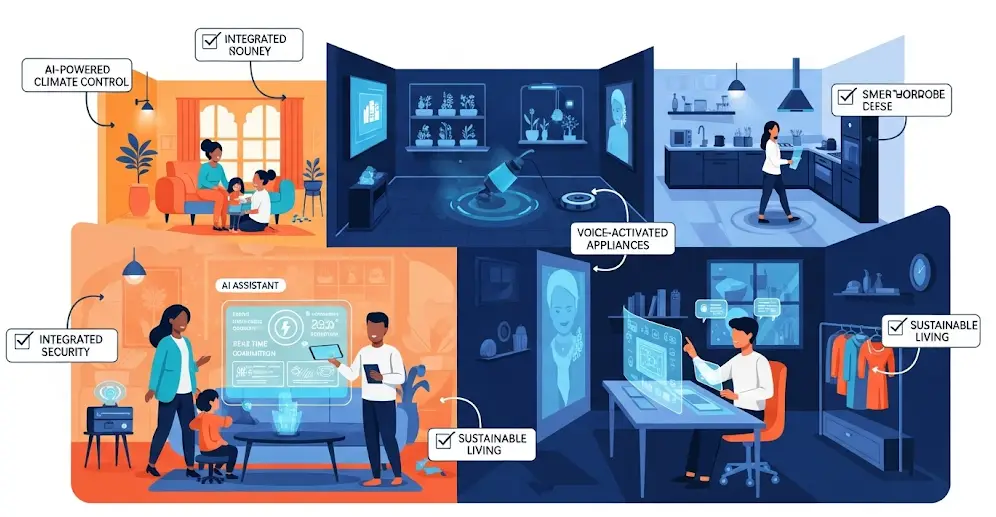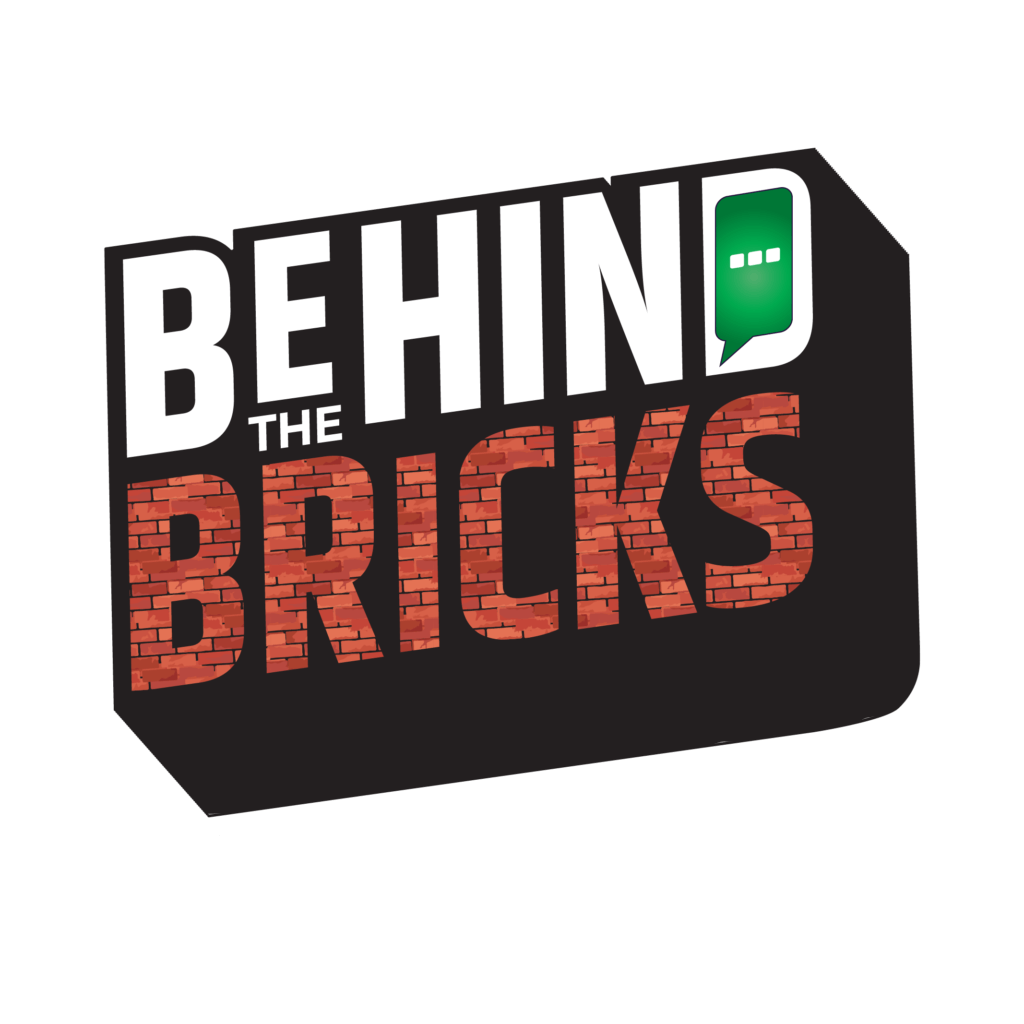Introduction
Not too long ago, the idea of walking into your house and telling the lights to dim or the AC to set itself at 24°C sounded like a scene out of a sci-fi movie. But here we are in 2025, where smart homes are no longer futuristic luxuries—they are fast becoming the norm.
For today’s homebuyer, owning a house isn’t just about four walls and a roof; it’s about comfort, safety, convenience, and sustainability. This is exactly where smart homes come into play. If you’re a buyer, investor, or even a developer wondering whether this is just another “passing trend,” here’s the truth: smart homes are not a fad. They’re shaping the very foundation of modern real estate.
So, what should you look for if you’re buying in 2025? Let’s break it down with a practical buyer’s checklist.
What Defines a Smart Home in 2025?
Before we dive into the checklist, let’s clear the basics.
A smart home is not simply one with fancy appliances. It’s a living space where technology works with you, not against you. Devices are connected through the Internet of Things (IoT), powered by AI, and controlled with ease—whether by your voice, an app, or even automated sensors.
Think of:
- Lights that dim as the sun sets.
- Security cameras you can check from your phone while traveling.
- Energy usage that adjusts automatically to save money.
In simple words, a smart home is designed to make your life more comfortable, safe, and cost-efficient.
Why Smart Homes Are More Than Just a Trend
Many people still assume that smart homes are about showing off gadgets. But the real story goes deeper. The shift towards smart living is happening because of four big reasons:
- Urban Lifestyle Demands – With fast-paced city living, people crave convenience. Why spend five minutes fiddling with switches when a voice command does it for you?
- Sustainability & Energy Savings – Rising electricity and water costs are forcing homeowners to think smarter. Automated energy management reduces bills while reducing your carbon footprint.
- Safety First – Smart locks, facial recognition, and motion sensors bring peace of mind. Security is a non-negotiable feature for families and investors alike.
- Evolved Expectations – Millennials and Gen Z, who now dominate the buyer pool, want homes that align with their digital-first lifestyle. Post-pandemic, health and wellness have also become central to smart living.
So, no—it’s not hype. Smart homes are here to stay and evolve.

The 2025 Buyer’s Checklist for Smart Homes
Now, let’s get practical. If you’re planning to buy a home in 2025, here’s your smart home buyer’s checklist:
1. Energy Efficiency
Smart homes should help you save on bills. Look for features like:
- Solar panels integrated with energy storage.
- Smart thermostats that learn your usage habits.
- Automated lighting that turns off when you leave a room.
This isn’t just about saving money; it’s about investing in long-term sustainability.
2. Advanced Security Systems
Safety goes beyond locks on doors. A true smart home in 2025 should offer:
- Biometric or app-based locks.
- CCTV feeds are accessible remotely.
- AI-enabled alarms that detect unusual activity.
For families, this is one of the biggest selling points.
3. Seamless Connectivity
Smart features are useless if the home doesn’t have reliable high-speed internet. Check whether the property is 5G-ready and whether devices are IoT-enabled for smooth integration.
4. Sustainability Features
Green living is no longer optional. A good smart home includes:
- Rainwater harvesting systems.
- Low-energy smart appliances.
- Smart irrigation for gardens.
This matters not only for eco-conscious buyers but also for property appreciation in the future.
5. Future-Proof Technology
Technology changes fast, and you don’t want to buy a home that feels outdated in two years. Ensure:
- Devices can receive software updates.
- Systems are compatible with multiple platforms.
- Upgrades don’t require breaking the bank.
6. Device Integration & Compatibility
Imagine having five smart devices that don’t “talk” to each other—it’s frustrating. Look for homes where devices are part of a well-integrated ecosystem.
7. Higher Resale Value
Smart homes tend to fetch higher resale prices and rent because tenants and buyers value modern features. For investors, this is a huge advantage.
8. Cost & Financing Options
Yes, smart homes may cost more initially. But remember—reduced bills, higher resale, and rental demand balance out the investment. Many banks now even offer loans for tech-enabled upgrades.
Why Developers Are Betting Big on Smart Homes
Real estate developers have quickly realised that smart homes are not just add-ons—they’re deal makers.
- In metros like Mumbai, Bengaluru, and Delhi, most luxury projects already come with smart automation as standard.
- Tier 2 and 3 cities are catching up fast, with builders marketing smart features as lifestyle upgrades.
- For investors, smart homes mean higher rental yields because tenants prefer convenience and safety.
Developers know one thing clearly: The buyer of 2025 expects more than brick and mortar. They want tech-driven living spaces.
Challenges You Should Be Aware Of,
Of course, no good thing comes without challenges. As a buyer, keep these in mind:
- High Initial Cost – Smart home-enabled apartments may carry a premium.
- Tech Obsolescence – Devices can get outdated quickly if not upgradeable.
- Connectivity Dependence – Poor internet = poor smart home experience.
- Privacy Concerns – Data from devices may raise questions about digital security.
The good news? With growing adoption, many of these challenges are already being addressed.
Final Words
The way we live is changing. A home is no longer just about comfort—it’s about future-readiness. Buying a smart home in 2025 means you’re investing not just in property, but in lifestyle, safety, and long-term value.
Developers are betting billions on this shift, and buyers who recognize this early will reap the biggest benefits. Whether you’re purchasing for your own family or as an investment, one thing is certain: smart homes are more than a trend. They are the new standard.
So, the real question is—when you buy in 2025, will your home be smart enough?
FAQs
Yes. While luxury projects offer high-end automation, many mid-range apartments now include basic smart features like app-based lighting, security systems, and energy monitoring.
Absolutely. Homes with integrated smart systems typically enjoy higher resale value and stronger rental demand.
Prioritize energy efficiency and security. These not only improve your lifestyle but also deliver financial savings.
Yes. You can upgrade existing homes with smart devices like locks, thermostats, and lights. However, newly constructed smart homes often offer better integration.
Yes. Reduced electricity bills, water savings, and lower maintenance costs make smart homes financially rewarding.


Write Your Comment